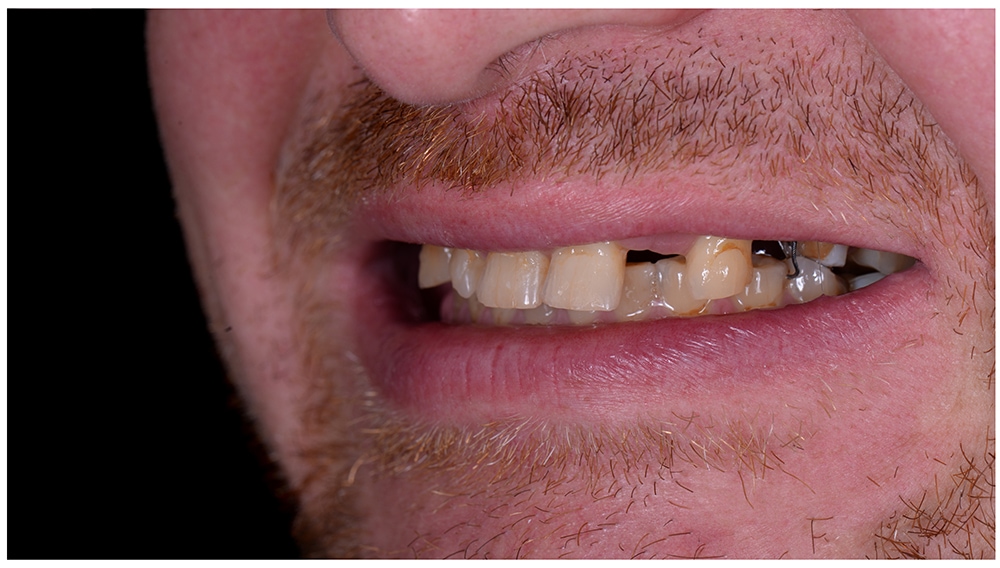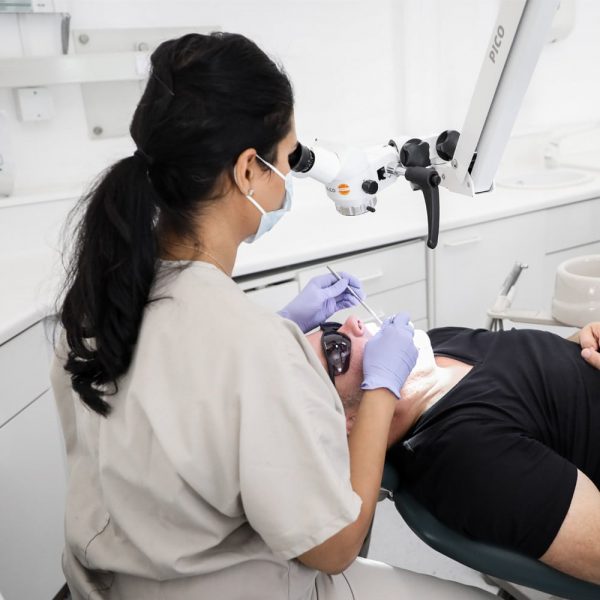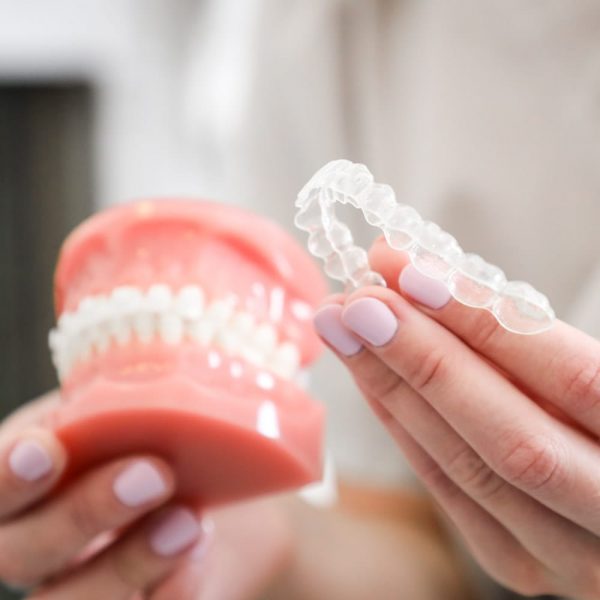Primary root canal treatment is used to preserve a tooth with irreversibly inflamed or necrotic pulp tissue. The complexities of this treatment extend beyond the removal of infected pulp and subsequent filling of the canal. They often encompass a nuanced understanding of dental anatomy, precise diagnosis, and meticulous post-operative care.
While the merits of primary endodontic therapy are well established, the discussion surrounding the factors determining its success, potential complications, and the importance of post-treatment care remains dynamic and evolving. This discourse aims to unpack these facets, offering an in-depth perspective on this indispensable dental procedure.
Primary Endodontic Therapy Procedure
The initial stages of primary endodontic therapy involve careful diagnosis and preparation, which includes the use various diagnostic tests to ensure that the correct treatment modality is selected.
Diagnosis and Preparation
Precise diagnosis stands at the forefront of successful endodontic therapy, guiding the choice of the appropriate therapeutic strategy. This critical step is achieved through various diagnostic tests, including palpation, temperature and electric nerve stimulation, x-rays, mobility assessment, percussion, transillumination, and Tooth Slooth.
Following diagnosis, preparation for the procedure includes chemo-mechanical debridement, creating an access cavity, and isolating the tooth with a rubber dam. This meticulous preparation ensures a controlled environment for the treatment, thereby enhancing its success.
| Diagnostic Tool | Purpose |
| Palpation | To assess for any abnormalities or inflammation |
| Mobility Assessment | To determine the stability of the tooth |
| Percussion | To identify potential sources of pain |
| Transillumination | To detect cracks or fractures |
| Tooth Slooth | To pinpoint the painful tooth |
Anaesthetics in Root Canal Treatment.
The use of anaesthetics is crucial in primary endodontic therapy as it ensures the comfort and cooperation of the patient during this intricate endodontic treatment. Local anaesthetics such as lidocaine (for nerve blocks similar to an epidural) commonly used in dentistry, effectively numb the tooth and surrounding tissues, mitigating pain and discomfort.
This allows the endodontist to thoroughly clean and shape the root canals without causing distress to the patient. Additionally, anaesthetics like articaine, known for its superior solubility, are used in certain cases since they can readily infiltrate dense bone, providing effective pain relief.
Nerve blocks and local infiltration is ineffective when the nerve is extremely sensitive due to acute inflammation. In these rare situations, intraosseous anaesthesia is extremely effective as a short term anaesthetic so that we can achieve what is required to get you out of pain.
Opening the crown
The endodontist creates an opening through the enamel and dentin layers of the tooth using a precision dental drill. This step is crucial for gaining access to the diseased pulp tissue.
This access also paves the way for shaping and cleaning the root canal system, with the ultimate aim of root canal filling. Specialist dentists use various tools and techniques to ensure the cleanliness of endodontically treated teeth before the completion of treatment.
Removal of pulp tissue
The removal of pulp tissue is a critical step in the root canal treatment procedure, requiring precision and skill. This process involves the use of various operative techniques to shape the root canal and eradicate infection effectively. This is because, as previously illustrated, the root canal systems in teeth have huge variations between teeth and are quite complex in every tooth.
In the following discussion, we will explore the different procedures for shaping and the operative techniques associated with pulp tissue removal.
Procedures for Cleaning & Shaping the Root Canal System
The process of cleaning and shaping the root canal system, has seen numerous advancements and techniques over the years since the first description in the scientific literature in 1961.
As part of primary root canal treatment, procedures for shaping involve:
- Hand instrumentation.
- Use of rotary instruments.
- Step-back and crown-down techniques in endodontic therapy.
- Hybrid procedures combining various techniques.
- Use of an apex locator to ensure that the gutta percha (see below) is contained within the tooth and does not come out at the tip of the root.
| Technique | Purpose |
| Standardised | Loss of working length |
| Step-back | Delicate shaping |
| Crown-down | Starts from coronal part |
| Hybrid | Combine step-back and crown-down |
Our specialist endodontist has studied all the techniques above and is trained to use the best technique applicable to your tooth.
Irrigation of the Root Canal System
Root canal irrigation, a crucial step in the treatment process, employs various chemical agents to effectively eliminate microbes and dissolve pulpal tissue. Irrigation is therefore makes an essential contribution to the overall success of the procedure.
The irrigation process generally involves: - The use of chemical agents like sodium hypochlorite (do not be surprised to smell bleach during the procedure), chlorhexidine gluconate, and ethylenediaminetetraacetic acid (EDTA). Manual or machine-assisted irrigant agitation techniques also help in eliminating microbes and dissolving pulpal tissue.
Irrigation plays a key role in nonsurgical endodontic therapy, ensuring the canals are free of infection. It is a vital part of endodontic therapy, contributing to positive outcomes of primary root treatments.
Filling of the Root Canal System
The process of filling the root canal system involves the application of gutta-percha, a natural polymer derived from the latex of the Palaquium gutta tree, to seal off the disinfected canal. Gutta Percha becomes soft/runny when heated and it solidifies when it cools. This makes it the perfect material for sealing root canal systems because it can flow into all the various nooks and crannies. The aim of root canal treatment is to create a hermetic seal inside the tooth thereby making reinfection very difficult/impossible.
Gutta-percha's radiopaque properties allow for verification of completely filled canals, thereby ensuring an endodontically treated tooth is sealed without voids.
Final Restoration
The final restoration procedure maintains the structural integrity and functionality of the treated tooth. Endodontists primarily use dental composite and dental amalgam to create a hermetic seal which is crucial in ensuring high success rates.
Successive prospective studies of the factors influencing the success of final restoration have shown that tooth structure, crown coverage, and patient's home care practices are critical. Restorations that fail to perfectly seal the treated tooth will lead to decay and eventual extraction.
As specialist practitioners, our commitment is to provide the best possible outcomes for our patients, which includes thorough follow-up and regular X-rays to ensure the ongoing success of the restoration.
Outcomes and Prognosis
The prognosis following root canal treatment hinges on various factors, including the thoroughness of the procedure, the tooth's anatomy, and the quality of post-procedure restoration.
The outcomes of nonsurgical root canal treatment largely depend on the complexity of the tooth's root system and the dentist's ability to completely clean and fill all canals.
The long term success rates were calculated in a large-scale study, finding that properly restored teeth yield a rate near 97% in the hands of a specialist endodontist.
Endodontic treatment can have success rate of up to 90% in general if carried out to a good standard allowing the tooth to remain in function.
Endodontic Therapy & The Rest of the Body.
Exploring systemic issues, it becomes evident that an infected tooth poses potential risks to other parts of the body, especially in individuals with existing vulnerabilities such as prosthetic joint replacements, unrepaired congenital heart defects, or compromised immune systems.
A systematic review of studies on primary root canal treatment reveals:
- The treatment can effectively reduce infection, thereby limiting the systemic spread.
- Success rates are high when the procedure is done correctly.
- In compromised individuals, prophylactic antibiotics may be needed to prevent bacteremia.
- The outdated 'focal infection theory' has been discredited, reaffirming the safety of root canal treatment.
Alternative to Endodontic Therapy
Alternatives to endodontic therapy include: no treatment, tooth extraction, and various prosthetic replacements, each carrying its own unique set of risks and benefits.
Nonetheless, an alternative to endodontic therapy could be tooth extraction followed by prosthetic replacement such as dental implants or dentures. However, these alternatives may present their own challenges such as pain, infection, or further dental complications.

















